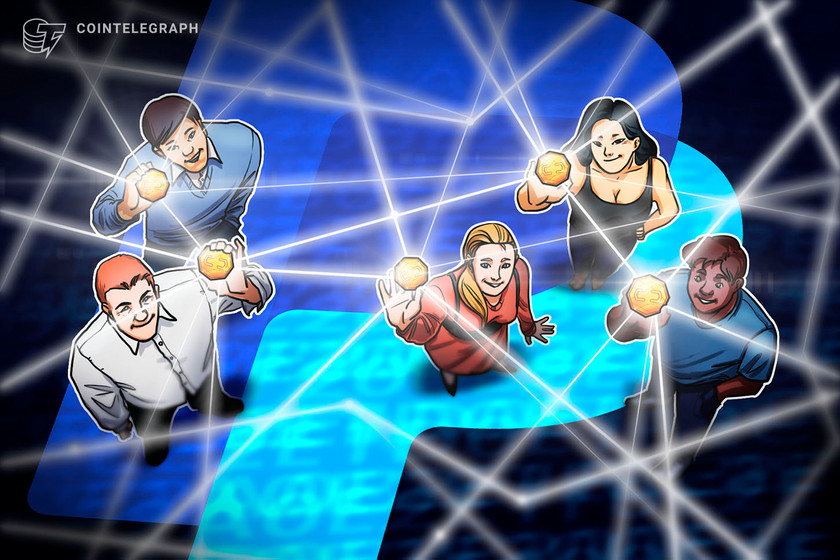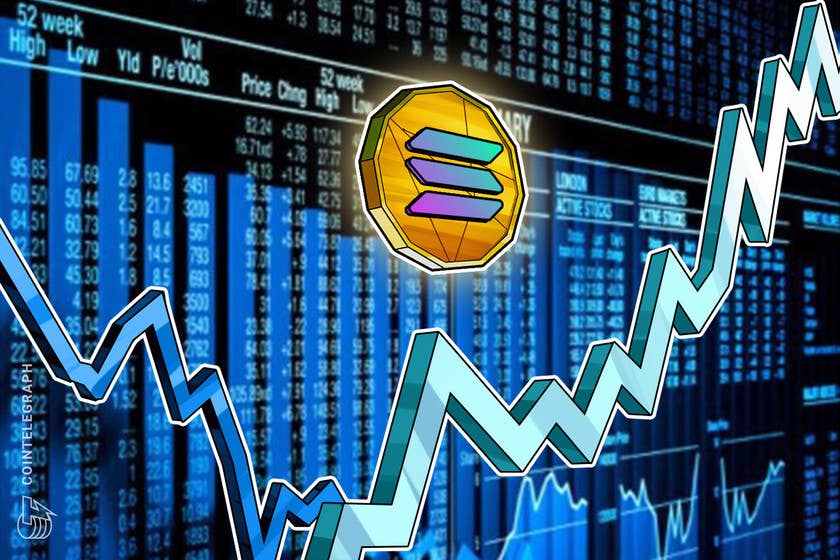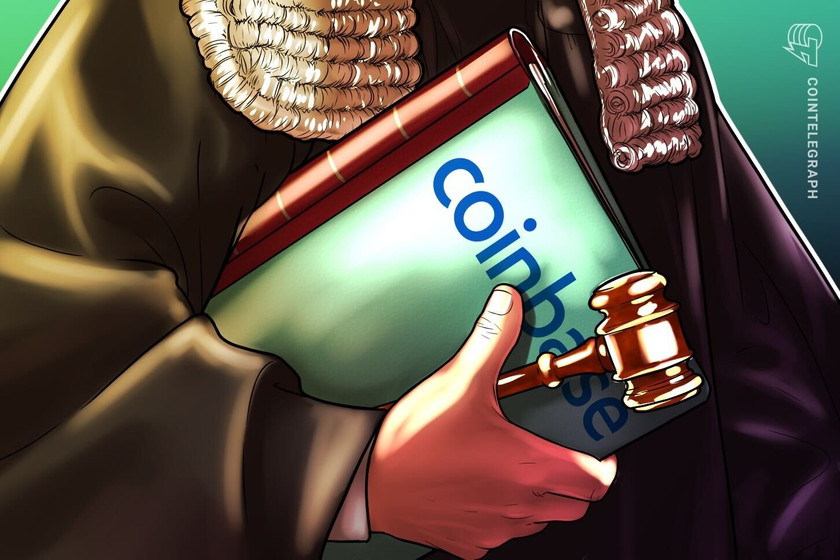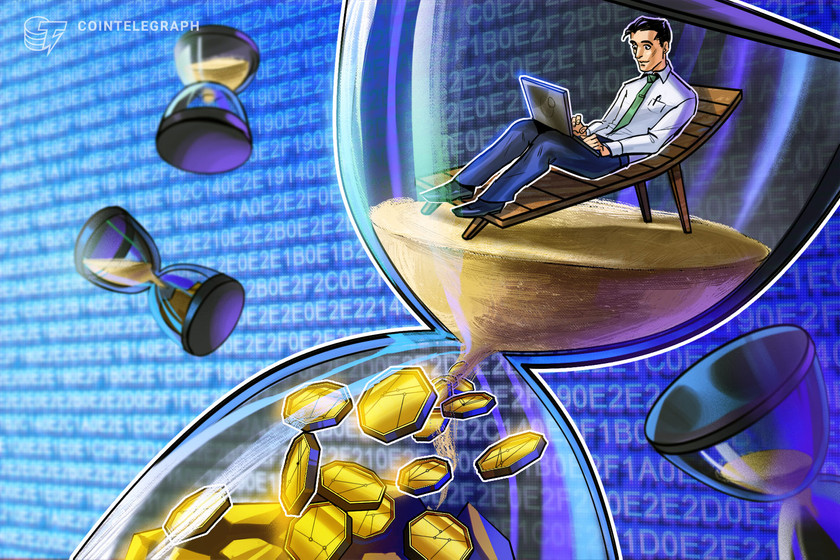Programmable money: How crypto tokens could change our entire experience of value transfer
Programmable money (PM) is in the air. It may be the next stage in the evolution of money. And it could be as disruptive as any financial technology in development today.
Yes, China is close to launching the first central bank digital currency (CBDC) at scale — perhaps within the next 12 months — but if so it will be eclipsed before the decade’s end by CBDC 2.0, i.e., digital currency attached to blockchain-enabled smart contracts. At least, that’s what many think.
Programmable money is money with constraints. An analogy is food stamps where recipients are given coupons, the equivalent of money, which can be spent only on food — not on alcohol, betting on horses, lottery tickets or anything else. In modern guise, these ‘food stamps’ are digitized tokens transacted on a blockchain platform with smart contracts.
Last month IBM was awarded a patent for a “bespoke programmable crypto token,” the first PM patent awarded in the U.S., co-inventor Jonathan Rosenoer told Cointelegraph Magazine.
‘A slow moving tsunami’
“Programmable tokens are being discussed more and more,” Jonas Gross, a research assistant and project manager at the Frankfurt School Blockchain Center (FSBC), a think tank at the Frankfurt School of Finance & Management, told us. In Germany, for example, the Ministry of Finance together with the Bundesbank recently started a working group about developing programmable Euro.
“Covid is forcing a slow moving tsunami in programmable money,” said Gert Sylvest, co-founder of Tradeshift, a business commerce platform. It could accelerate the transition to programmable money in e-commerce. Since the pandemic, “we’ve seen a spike in interest,” especially when the ensuing liquidity crisis included a payments slowdown. Many are ready now to give programmable money, including automated payables/receivables settlements, a new look, he said.
With IBM’s new invention (“United States Patent 10,742,398, Rosenoer, et. al. August 11, 2020”), the crypto token’s parameters — constraints — can be stored in the token itself, or they “may be stored in an on-chain or off-chain database referenced by a hashed identifier stored within the token.” According to co-inventor Rosenoer, the token has the potential to advance many social/economic purposes, including delivering humanitarian aid in the event of natural catastrophes or war. For instance:
I could create digital currency that can only be held by credentialed refugees and transferred to credentialed businesses.
“A charity or refugee agency can issue the credential to the refugee. The businesses can be similarly accredited. Then the programmed tokens representing funds can be issued to the refugee and held on his/her phone. The refugee can use them to pay for goods and services from accredited businesses, only. The refugee could also transfer them to other refugees.”
A programmable token could be created by an individual (“you could create your own AndrewCoin”), a business, a charity, a bank, a government — or some other entity, he added. On the backend, an auditor could receive automated reports about who is holding the tokens and where they are being used. “Unexpected patterns, indicating skimming or extortion, can trigger alarms and exception handling,” noted Rosenoer. (‘Skimming’ is a big problem in delivering humanitarian aid. And even when aid arrives, recipients are sometimes robbed — another worry a programmable token could mitigate.)
What is the status of programmable tokens today? There are few production-level deployments of anything in the DLT/blockchain space, said Rosenoer, but that is likely to change. Governments could use programmable tokens to enforce economic embargoes. A token could be programmed so that its value could be redeemed anywhere in the world — but not in North Korea or Iran, for example. “People in startups are moving [use cases] forward,” he added.
More demand in the post-Covid world?
“In the U.S., it would have been great” for the government’s distribution of its coronavirus stimulus checks, the so-called helicopter payments made this spring to every tax-paying U.S. citizen, if programmable money had been an option, Kaj Burchardi, Managing Director & Partner of Platinion (Amsterdam), part of the Boston Consulting Group, told Magazine. “It could have been done in a few seconds, at no cost (distribution-wise). It would have been a no-brainer.”
Professor George Giaglis at the University of Nicosia (Cyprus) told Cointelegraph Magazine that:
Programmable money represents a historic shift on how we perceive and use money.
While many forms of such money exist today — most cryptocurrencies are programmable to a higher or lesser degree — much of the discussion around CBDCs involves digital currencies — not money with conditions. He added:
“None of the existing initiatives involve programmatic money in the strictest definition of the term. Indeed, the CBDCs under development today are only programmable by the issuer — the central bank decides monetary supply, functionality, privacy and other characteristics — and not by the end user — i.e. you and I will not be able to write code attached directly to our money, dictating its behavior and movements.” While the vision of fully programmable money is closer to reality than ever before, “it will still be some time before governments and central banks go all the way that the private sector has, with digital currencies and decentralized finance (DeFi).”
In March, the German government organized a hackathon to find innovative ways to combat the Covid-19 crisis. One promising proposal was a decentralized common Euro — a “dezentraler gemeinschaftlicher Euro” (dgE) or Diggi — a government-distributed blockchain-based voucher which could only be spent at participating businesses in economically hard-hit areas. Dorothee Bär, German State Minister for Digitalization, said the system would enable smaller companies to participate in aid programs.
The next evolution stage of digitalization
Boston Consulting Group’s Burchardi told us that roughly 80% of the world’s central banks are looking into a digital currency, including some who are exploring CBDC 2.0, — i.e., digital currencies connected to smart contracts. Publicly, no central bank appears to be pushing programmable money, however. The impetus is coming mostly from academia, including the Frankfurt School Blockchain Center in Germany and MIT Media Lab’s Digital Currency Initiative in the U.S., as well as industry groups like the Association of German Banks (‘bankenverband’)
“[U]nlike with traditional digital money – the new forms of cryptomoney feature a significant technological innovation: they can be connected to so-called “smart contracts,” noted the Association of German Banks (AGB) in a blog. Germany’s private banks regard programmable digital money “as an innovation with great potential that can be a key component in the next stage of the evolution of digitalization,” said the group.
Gross told us that while programmable CBDCs were unlikely in the U.S. or Europe in the near future, “programmable tokens will become available as tokenized commercial bank money or e-money in the short-run” — the next one to three years. “Currently, banks increased their efforts to introduce commercial bank money-backed programmable tokens linked to bank accounts.” Government-sponsored projects like CBDC 2.0 might take longer.
Delivering humanitarian aid is one projected PM use case cited again and again in interviews. Rosenoer lived for two and a half years in Mumbai, India, surrounded by “shocking poverty,” where aid to the poor was stolen by intermediaries in prodigious quantities, he told us. Poor people don’t have access to banks, but many today have cell phones. Without too much trouble they could receive digital currency on their phones, and bypass the banking system entirely.
A programmable token could strengthen controls around aid payments, tracking and tracing flows on a national level, using link analysis to uncover fraud and corruption. Where are payments going? Why is so much flowing to one place? “That’s the real promise,” said Rosenoer — rooting out the institutional corruption that keeps poor people poor. The developing world needs a tool like this — much more so than the U.S. or Europe “where lots of things are [already] good enough.”
Eliminating blacklists
Programmable money could enable global financial transactions that preserve compliance with local laws and regulations, suggested Rosenoer: “Assume that you have a tokenized asset that you want to sell. Let’s call it a long-term debt. The law says that I can only sell it to an accredited investor — one that has a certain amount of net assets and annual income — or I can sell it to a foreign investor.” These are classes of people defined by law. If Rosenoer sells his asset to them, they may have to hold the asset for a period of time if they are subject to U.S. jurisdiction, and then they can only sell to an accredited investor or a foreign investor.
“I can program my token to ensure that whoever holds it meets these requirements,” continued Rosenoer.
This means that I do not have to, for example, create whitelists and blacklists. The token carries the restriction and someone else can issue the credential that meets the requirement(s).
“The future of money is programmable,” said Neha Narula, director of the MIT Media Lab Digital Currency Initiative. PM can create a world that is difficult to envision at present. “Imagine a world where I can rent out my healthcare data to a pharmaceutical company. They can run large-scale data analysis and provide me with a cryptographic proof that shows they’re only using my data in a way that we agreed. And they can pay me for what they find out.”
Programmable tokens can be used to help achieve environmental goals like ridding the world’s oceans of plastic waste. During a coastal cleanup last year of the Manila Bay, for example, local fishermen collected 3 tons of trash — most of it plastic — and were paid for their labor with an Ethereum-based ERC-20 token. Coins.ph (a partner on the ground) helped to convert the crypto into fiat currency. Efforts like these appear to offer an ingenious solution to two seemingly intractable problems: poverty in the developing world and ocean plastic waste.
Obstacles remain to programmable money
What hurdles still have to be overcome before programmable money becomes an everyday reality? The University of Copenhagen’s Carl Victor von Wachter told Cointelegraph Magazine that “country-wide level scalability issues of the blockchain have to be overcome. Further, a lot of technology and applications have still to be improved for end users. The technology is currently too complex in terms of user interface and user experience.”
Freddy Zwanzger, co-founder and chief data officer at Anyblock Analytics GmbH, told us that people need to become better educated in the handling of digital currencies and their usefulness as alternatives to fiat currencies. It may be helpful to put things in everyday terms “like coupons and loyalty points to help them grasp the concepts.”
Gross said there was still a general lack of understanding about the potential benefits of programmable tokens, as well as insufficient collaboration between public institutions — e.g., central banks and governments — and the industrial sector that will be a main user of programmable tokens. Continued regulatory uncertainty doesn’t help either.
Any digital payments solution will surely have to perform basic KYC (know your customer) checks and develop trusted governance protocols, Sylvest added. “The moment [digital] payments start flowing through different pipes, they become a challenge to regulators.”
Tobias Tenner, AGB’s associate director and head of digitalization, explained that, “privacy and anonymity concerns must be taken into account” if PM is to take hold — a point on which many agree. In contrast to Bitcoin (BTC), which offers a relatively high degree of privacy — users can’t be easily surveilled — programmable tokens are designed for traceability. There are ways to engineer privacy into the token, however, said Rosenoer, using zero knowledge proofs, for instance, that can confirm an individual really has the assets claimed without revealing who that individual actually is.
A society may tolerate only so much traceability, opined Burchardi. Not everyone wants the government tracing everything they do. So it’s important to consider when to apply traceability and when not to. There could be thresholds. Below $1,000, a transaction would not be traced, for instance.
The evolution of money
What is the most likely time frame for widespread PM usage? The appearance of large-scale non-BTC digital currency is “imminent,” said Rosenoer — either the end of 2020 or beginning of 2021, and it is likely to come in the form of a Chinese CBDC or from a Libra stablecoin. Tenner added that a regulated programmable Euro issued by private banks could maybe coexist with other programmable e-money like Libra within the next five years.
Said Zwanzger: “In my opinion, the need is there but the technology is not quite there yet in terms of UX, adoption etc. – and the much bigger obstacle is getting into the minds (and hearts) of the people/users. There were experiments with local currencies for example even before blockchain was around, and they did not take off. I don’t see that the nascent blockchain technology can much change that at least over the next one to three years.”
Kevin Dowd, a professor of finance and economics at Durham University in the United Kingdom, struck a more skeptical note. “It seems to me that programmable tokens have yet to demonstrate that they can feasibly achieve outcomes that are superior to or cheaper than the outcomes that can be achieved from existing technologies. We are still talking early days here,” he told Cointelegraph Magazine.
As noted in a Boston Consulting Group blog co-written by Burchardi, most CBDC models discussed over the past decade haven’t really addressed the possibilities of programmable digital currency. But they remind us that when programmable money is adopted at scale — on the governmental level — sweeping societal/economic changes could follow:
“The first generation of CBDC, introduced roughly a decade ago, had limited interoperability and programmability. The next generation, known as CBDC 2.0, will likely work on a national or supranational level (in the case of the European Central Bank). These currencies could help to automate monetary policies, which could mitigate the risk of hyperinflation in emerging economies and reduce purchasing power inequality.”
And as the report notes, perhaps the most attractive value proposition for governments:
Better traceability would allow nations to curb criminal activities, tax evasion, and drug trafficking.









